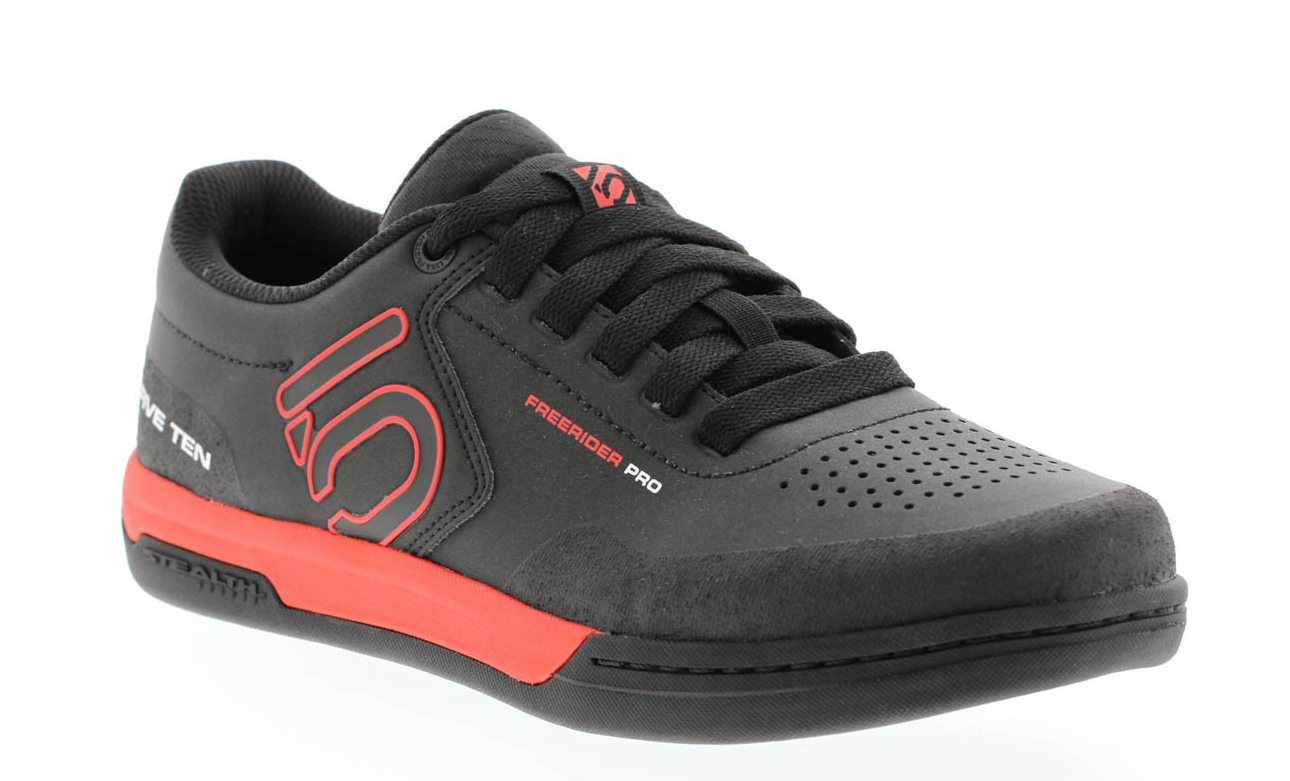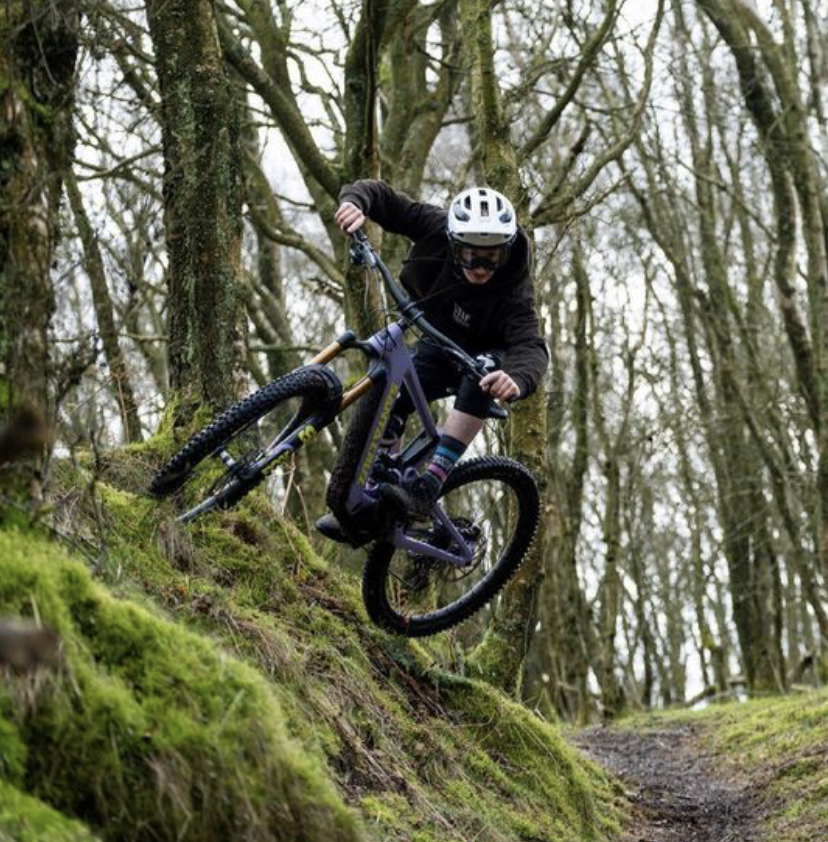The best MTB flat pedal shoes in 2020
Choosing the best MTB flat pedal shoes can help you build confidence and develop technique when you’re out on the trails

So why is it important that you choose the best MTB flat pedal shoes and what are the advantages of riding flat pedals? To explain further, there are three main contact points on a mountain bike; your hands, bum and feet. All of which have a critical effect on your riding experience in terms of comfort and control and riding flat pedals can be a great way to hone the correct technique, boost rider confidence and form a new level of trail feedback communication to the rider. Oh, and dropping a foot in your favourite turn is a pretty good feeling too! Having the right shoe can make or break this wonderful connection so buying the best option available is vital. Tester Jim Bland exclusively rides flat pedals and knows exactly what to look for in a riding shoe to keep your feet glued to the pedals whilst maximising feel and comfort on the trail.

Five Ten Freerider Pro
Flat pedal shoe kings. Five Ten still rule
The Freerider pro from Five Ten is the equivalent to your favourite band’s greatest hits album. Five Ten has taken all of its best features and piled them into one shoe, this gives the Freerider Pro the most outright grip, the best damping properties and the best support to pedal-feel balance out of any other shoe on test making it the best flat pedal mountain bike shoe available.

O'Neal Pinned
A respectable price tag without compromising quality
O’Neal Pinned Pro shoes are some of the most affordable flat MTB shoes that still deliver on top quality performance. They look like skateboard shoes and feature a grippy honeycomb-style tread, while their low heel height puts your foot in the optimal position to feel every aspect of the trail. This makes them perfect for pump tracks and jumps, when you need to experience every nuance of the bike’s movements.
The inner is incredibly comfortable, while the lace-up closure lets you really cinch everything down in place, making for stable footing and confident handling on the trails.

Ride Concepts Hellion
Ride Concepts offer serious competition to established brands, especially if you swap insoles
The Hellion is a good looking shoe, constructed using a two-piece synthetic upper with an anti-peel coating, it’s designed to take a whole ton of abuse while soaking up minimal water and keeping drying times fast. The high-quality laces used are a nice finishing touch too, and while it’s a small difference it’s noticeable one as they don’t lose tension or become baggy over time.

Vaude Moab Mid STX
Incredibly well-made and good for the planet
They may resemble mid-90’s Reebok basketball shoes at first glance, but these all-mountain boots from Vaude make an excellent quality winter riding shoe. They’re constructed from a material called Sympatex, which does a great job of keeping the water out while letting your feet breathe. The upper is well-made and comfortably padded, without feeling chunky or heavy, andl offers plenty of protection around the toes. Vaude’s products are renowned for being eco-friendly, hard-wearing and long-lasting, so if you’re happy to lay down the investment for them, these boots will last for years to come. We recommend sizing up by about half a size, as these do tend to come out a little small.

Shimano GR9
Shimano’s flagship flat-pedal shoe is light and offers heaps of pedal-feel
The GR9 is Shimano’s top-of-the-range, gravity-focused, flat-pedal kick and with the addition of an exclusive sole from Michelin, there’s a big leap forward in pedal traction when compared to older Shimano models. The first thing you notice when riding the GR9 is how the ultra-thin sole exaggerates that ‘in-the-bike’ feeling when riding down the trail. With the shoe being on the floppy side of the spectrum it concaves nicely over the pedal too and together this offers high amounts of tyre-feel and trail feedback from the pedals.

Five Ten Freerider EPS
A true game changer for flat pedal users in the winter months
The Freerider EPS sports a ton of cold and wet weather-tackling features which combine to make it a must-have for the colder months. It features a heat-reflective footboard beneath the insole, a fully gusseted tongue and a stitch-less one-piece front panel. On top of this, the synthetic leather upper is Primaloft insulated for maximum warmth in sub-zero temperatures.
1. Fit
As with most things mountain-bike related, fit is very important. For flat-pedal riders, 'feel' is vital and allows you to maximise the advantages of not riding clipped in. If the fit is too tight it can cause the circulation to your feet to be cut off, this results in numbness leaving you with little idea as to where your feet are positioned on the pedal. On the flip side, if the shoe is too loose-fitting this can make correct foot placement seem impossible, especially on rough terrain. While we have done our best to decipher how each shoe fits, we still recommend physically trying them on, as, at the end of the day everyone’s feet are different and size/cut differs from manufacturer to manufacturer.
2. Weight
The lighter the shoes the less energy it takes to rotate them round with every pedal stroke. While lighter shoes are more efficient there comes a point where protection, stiffness and support become compromised. The importance of this varies with different styles of riding though. Trail riders who spend a chunk of their time climbing will value a lighter weight shoe over a totally gravity-focused shredder who prioritises damping and protection.
3. Retention
Every shoe here besides the Shimano GR9 uses a traditional lace-up design. While more complex fasteners may seem smart it’s hard to beat the simplicity, adjustability and reliability of a solid set of laces.
4. Protection
Most flat-pedal users tend to be more gravity-focused where speeds are high and impacts are frequent and potentially harsh. Hardened toe boxes and heel cups are essential for protection against rock strikes and trail detritus. The sole also needs to be able to absorb the feedback and hard impacts associated with ripping down the toughest trails.
5. Damping
Damping is essentially a property of a material or moving component that restrains or stops movement in a controlled manner, often measured in curves. For example, most mountain bike suspension forks have damping adjustment, adding more damping such as rebound damping slows down the spring oscillation and offers greater control. No rebound damping would mean your forks behave like a pogo stick but having rebound damping will change the way the fork reacts. While the soles of flat pedal shoes don’t have adjustable dials, the rubber used needs to be carefully chosen and tuned to soak up heavy impacts and vibrations from the trail. A sole with good damping properties will reduce fatigue on longer rides and translate heavy hits from rough trails into a dull and calm feeling through your feet.

Jim Bland is a product tester and World Cup downhill mechanic based in North Yorkshire, England, but working Worldwide. Jim’s chosen riding genre is hard to pinpoint and regularly varies from e-bike-assisted shuttle runs one day to cutting downcountry laps the next. Always on the hunt for the perfect setup, Jim will always be found comprehensively testing kit with World Cup racing levels of detail. His ultimate day out includes an alpine loam trail, blazing sunshine, and some fresh kit to test.
Rides: Santa Cruz Hightower, Santa Cruz v10, Specialized Kenevo.
Height: 170cm
Weight: 64kg
